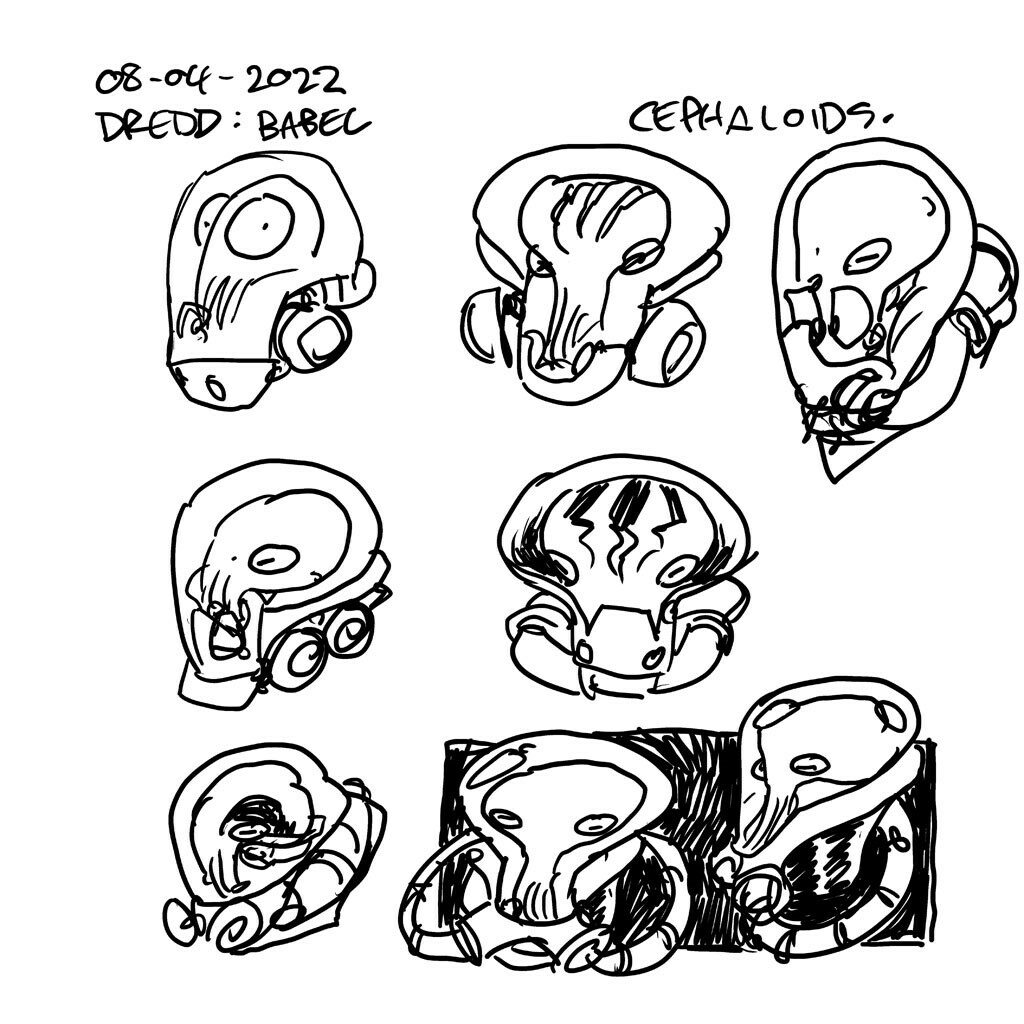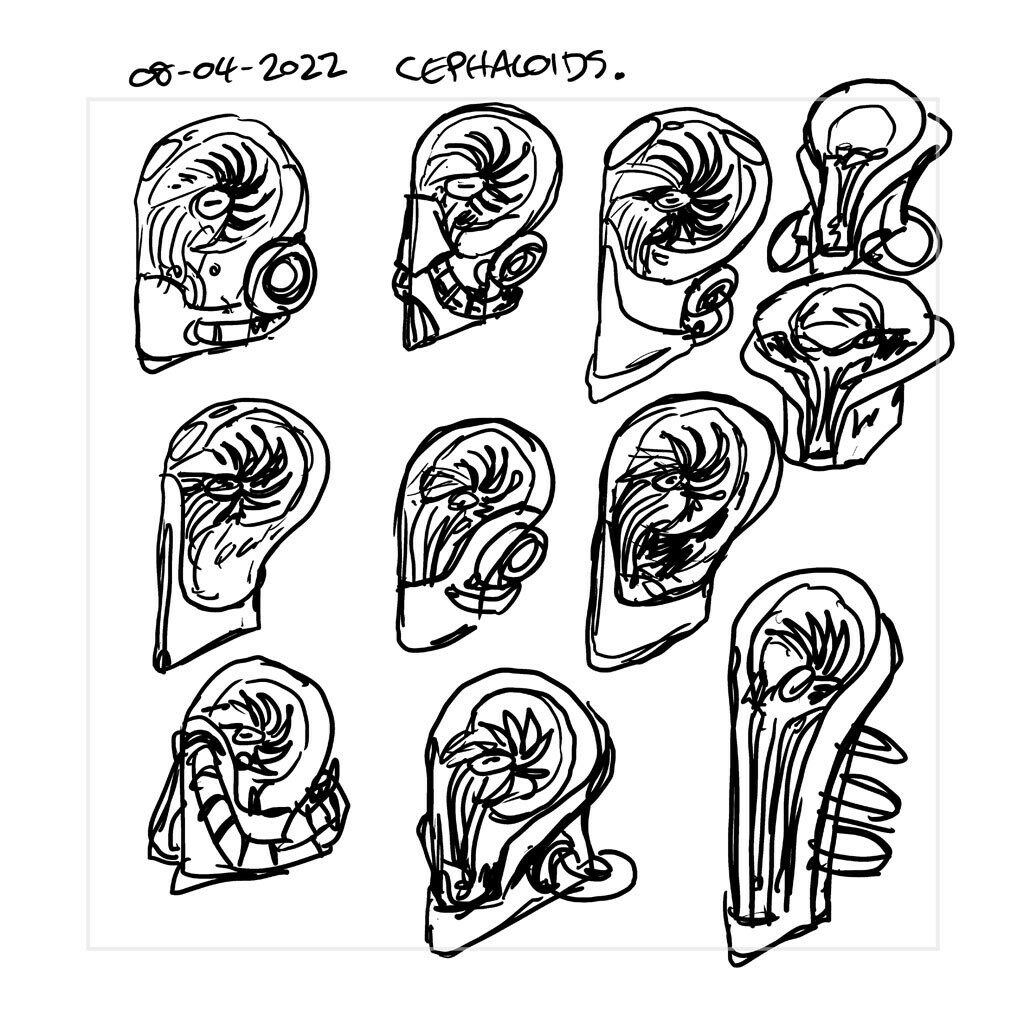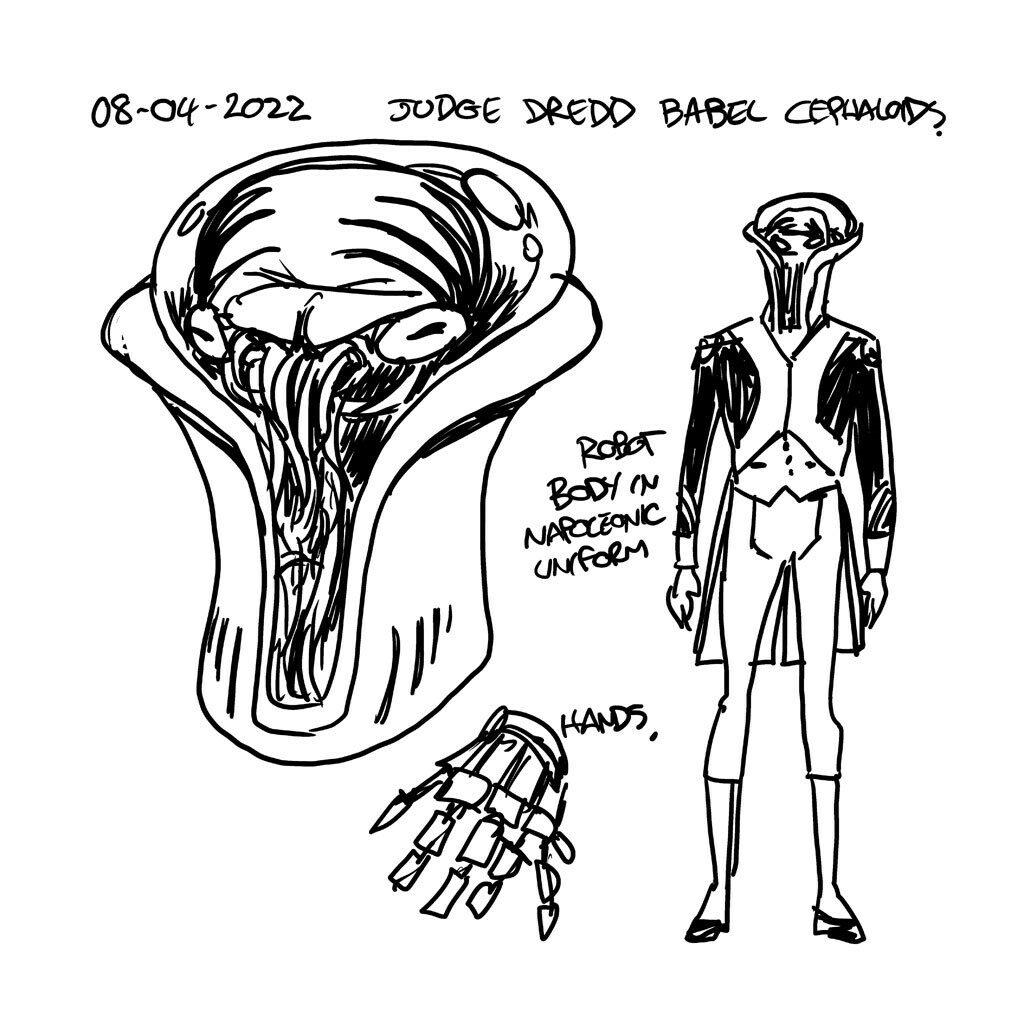Interview: Babbling about Judge Dredd:Babel with Ian Edginton and D’Israeli…
19th October 2022
Starting this month in Judge Dredd Megazine issue 449 (the one with the devilisssshly delightful Nick Percival cover) we have a new two-part Judge Dredd strip, Babel, by the terrific team of Ian Edginton and D’Israeli.
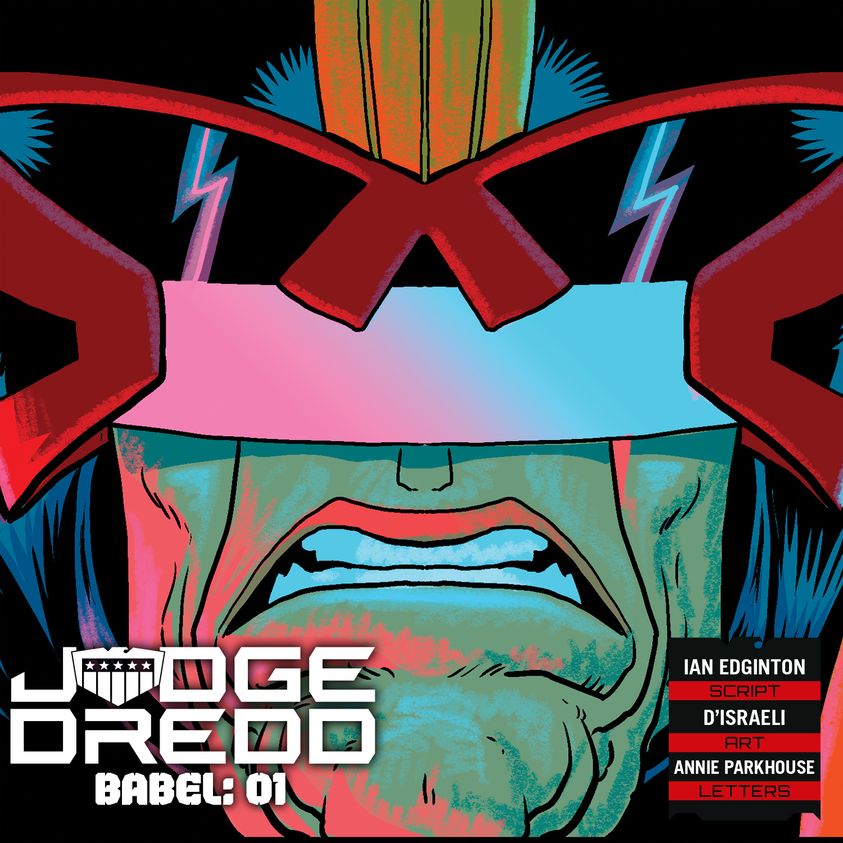
Beginning here in Megazine issue 449 and finishing up in Megazine issue 450, Judge Dredd: Babel finds Dredd dealing with extraterrestrial developers, meaning it’s time for a little diplomacy… and you know how much he enjoys that.
So, time to chat with the writing & art team of Ian Edginton and D’Israeli (aka Matt Brooker) about the thrill of Judge Dredd dealing with the latest off-world interest in Mega-City One’s re-development.
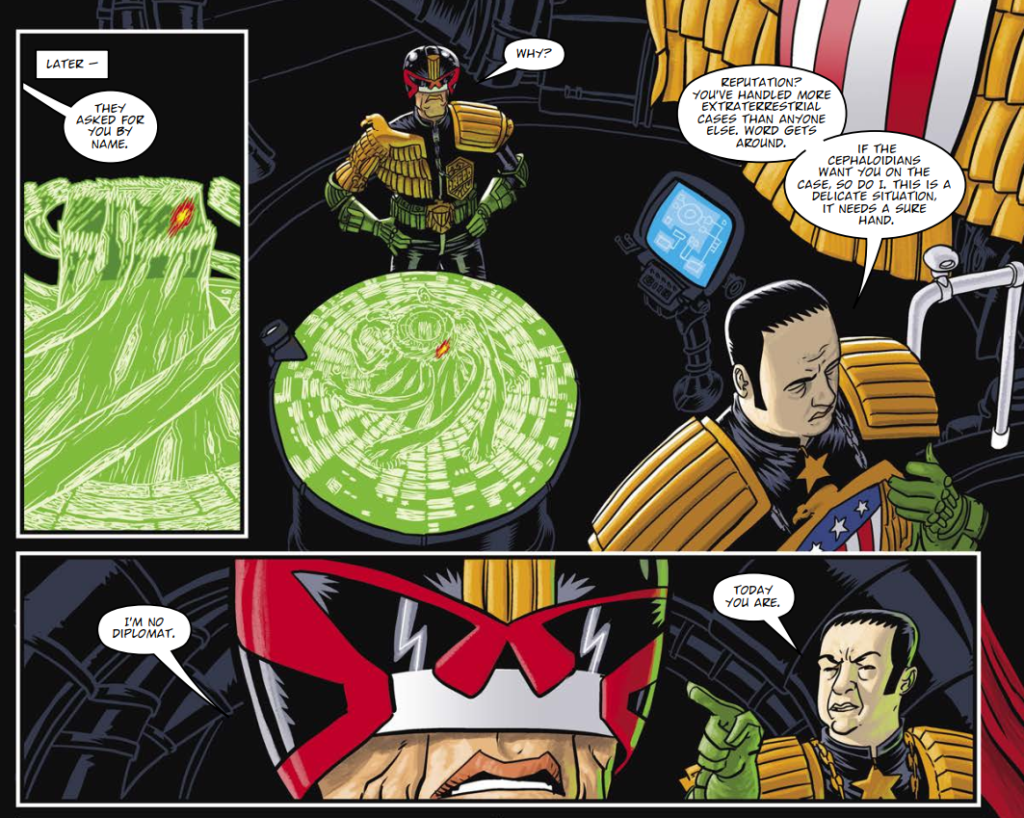
Ian, D’Israeli/Matt, lovely to chat to you, hope that the world is weird and wonderful rather than plague-ridden and horrible for you both right now.
Starting in Megazine 449, you’re writing and drawing Judge Dredd: Babel. It all comes from the events of Ian’s last Judge Dredd Megazine tale – Dez Rez (Megazine 438), with art that time by Dave Taylor. In that one, there was a quantum tunnel to Alpha Centauri being built and, in a Hitchhiker’s Guide style twist, the Earth’s been sold to some aliens who want to use the Earth as prime development estate right next to it.
Now, in Babel, we’re seeing the ramifications of that one – can you fill us in on what to expect in Babel?
IAN EDGINTON: Well, it’s long been established that the Earth and by extension Mega-City One are part of an actively inhabited, interstellar community.
I like to think that the Earth is probably a bit of a provincial backwater. It’s way out on the Western arm of our spiral galaxy. People know about it but no one really wants to go there. It’s the galactic equivalent of Slough, that is until someone decides to drive a bypass through it and then things get interesting!
When the Interstate Highway System was being built in the USA, it turned some small towns into boomtowns and effectively destroyed others, so this is a similar sort of thing. I want to open the Earth and MC-1 up to a much wider, universal community!
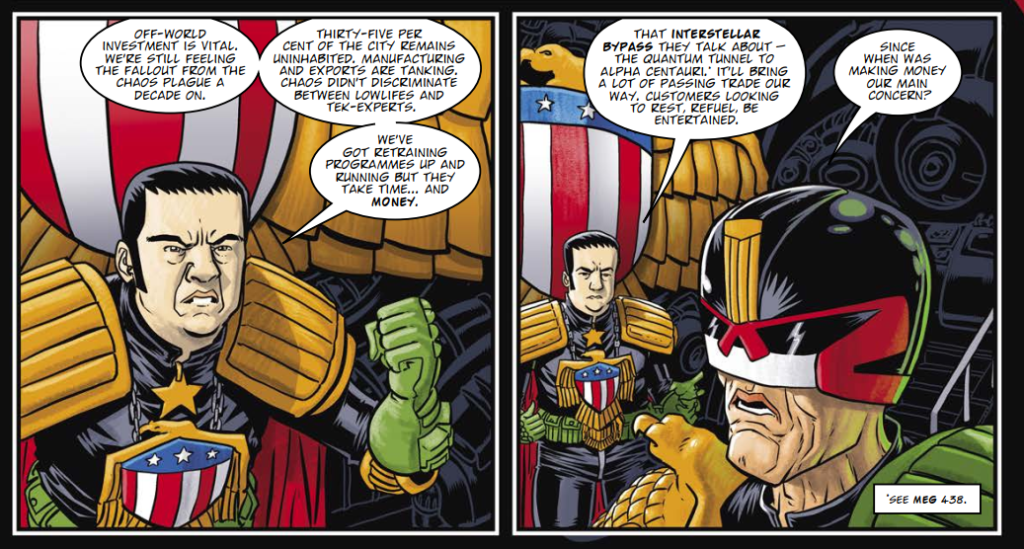
That initial story, Dez Rez, seemed very much to be just a simple done-in-one classic Dredd, albeit one that opened us up to the idea of Dredd having the inside track on some sort of higher Justice Department out there amongst the stars.
What’s the deal with these cosmic enforcers? And have you plans to weave them into future Dreddworld tales?
IE: They may crop up as and when I get to write some more Dredd. There aren’t just the cosmic enforcers from Dez Rez either, there’s also the alien insect judiciary who featured in the two-part Hair of the Dog story that Matt and I did a while ago. [2000 AD 2174-2175]
Was there always an idea in your head that you were going to take it any further, or is it simply one of those writerly moments where suddenly an idea appears in your head, lightbulb-like, with a way to follow up the story?
IE: I had the general thought that I wanted to open up Dredd and his world to these huge external forces which is where the quantum tunnel/interstellar bypass came from, the rest kind of followed on from that idea. Because of its proximity to the quantum tunnel, Earth’s property value has skyrocketed and all that entails.
Here, we’re getting into an aspect of MC-1 we rarely see from the other side – the idea of extraterrestrial contact with the city to prop up the finances, not to mention the whole concept of extraterrestrial life.
IE: I assumed that after the Chaos Plague MC1’s economy would have tanked so they’d be desperate for investment from whoever. The quantum tunnel just made the Earth a juicier prospect.
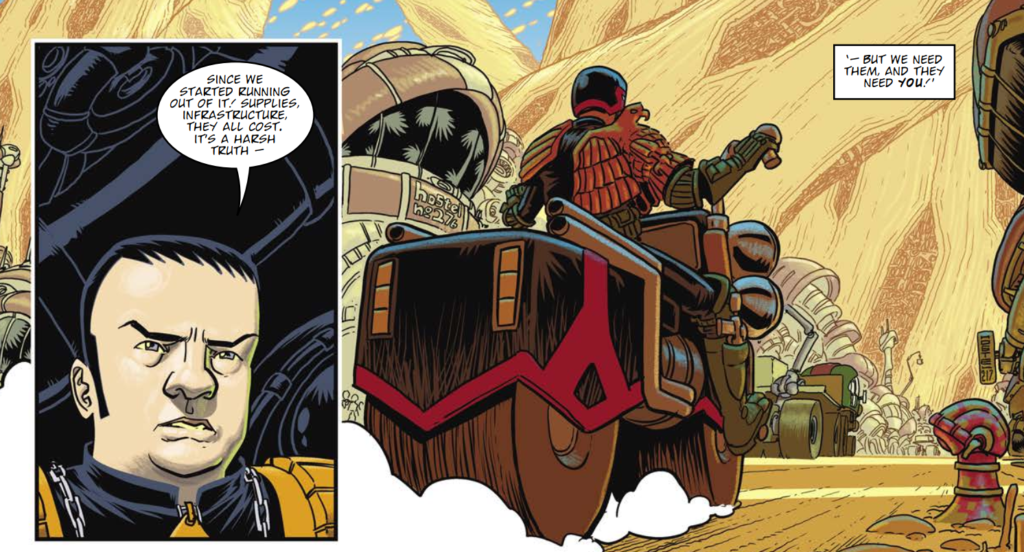
In the past, Dredd’s dealing with those from out there have tended to have aliens that are a lot more troublesome and violent. Exploring the trade links is a fascinating way to go about things.
IE: I wanted to do more than just ‘alien of the week comes to MC-1’. I wanted to open up Dredd and his world to a wider extraterrestrial influence. The city wants the alien investment but it brings a lot more with it, there’s immigration, integration and cultures clashing head-on. Some of the aliens will be dangerous and violent but there’s also white-collar crime as we saw in the story High Spirits, (that Dave Taylor and I also worked on) [Progs 1640-1643] where the Aetherwerks, an alien corporation investing in MC1 was secretly harvesting human souls to smoke as drugs.
What can we expect from Babel? Obviously, the title gives rise to considerations of the biblical Tower and ‘let us go down and confuse their language there, so that they will not understand one another’s speech’ – is this going to be a thing that divides MC-1 and its inhabitants, driving further wedges between the people?
IE: It’s about aliens investing in MC-1 and all the confusion and cooperation it brings. The Judges don’t like change but if they want this off-world money to shore up the city, they have to work out a way to compromise with a whole host of different races. Remaining their usual rigid and inflexible selves isn’t going to cut it.
It also means you can build a little piece of your own Dreddworld, always a good thing for a writer in these modern Dredd times.
IE: There is that!
Go on, you can tell the truth, every so often, is there a pitching conference in front of Tharg where you, Mike Carroll, Rob Williams, Arthur Wyatt, Ken Niemand, Rory McConville, and others with a dog in the fight all have to engage in some sort of gladiatorial thing to carve out your own little fiefdoms of Dreddworld? (Obviously John Wagner sits at the right hand of Tharg safe in the knowledge he can do whatever he damn well feels like!)
IE: Cue Star Trek fight music. “Twenty quatloos on the Brummie!”
Never bet against a Brummie – we’re a fightin’ breed!
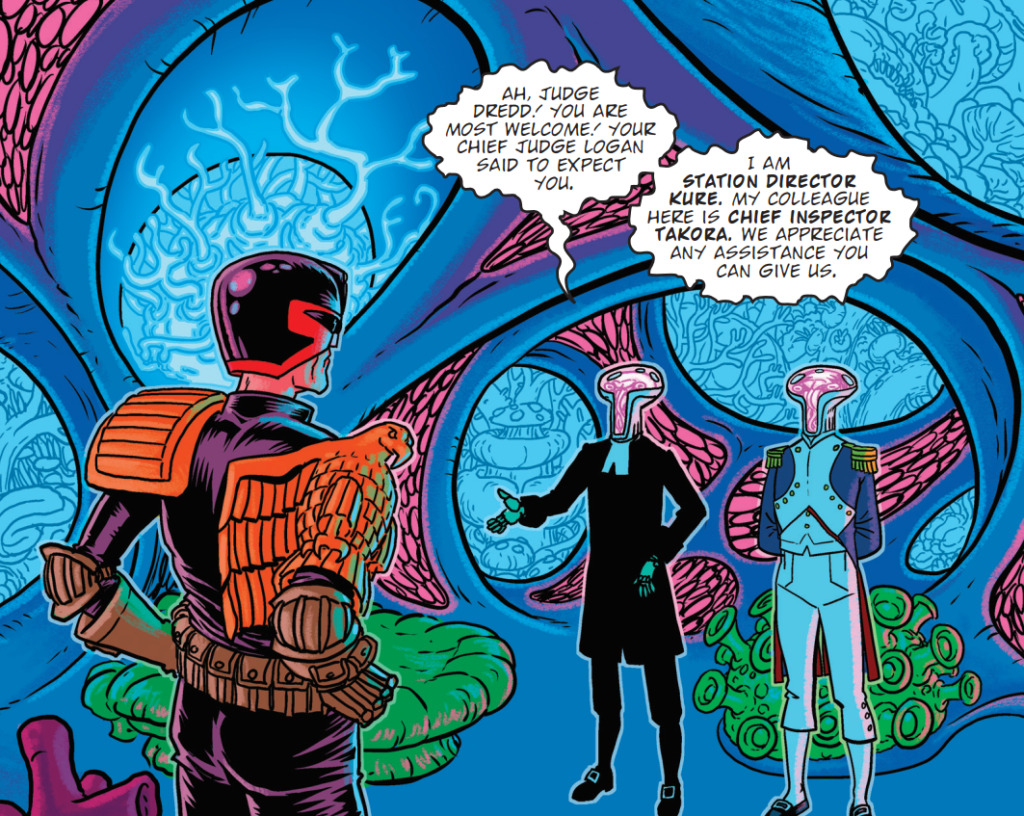
As far as this one’s concerned, it’s bringing you and D’Israeli back together for a rare Dredd outing.
IE: The last time was Hair of the Dog when Dredd teamed up with the tiny, insect alien cop who was on his last case before he retired and all the clichés that entails!
Matt, it’s always a pleasure to see your work in either the Prog or the Megazine, and a particular pleasure seeing you on Dredd.
MATT BROOKER: Thankee!
And always good to see those Matchbox Adventure 2000 vehicles featuring in the strip – I remember those from my childhood!
MB: Yeah, it was a blast recreating those – I not only read the comic as a kid, but I had the toy too! I must give a shout out to Mark Walton, who very kindly let me use his detailed 3D model of the Land Raider for those panels.
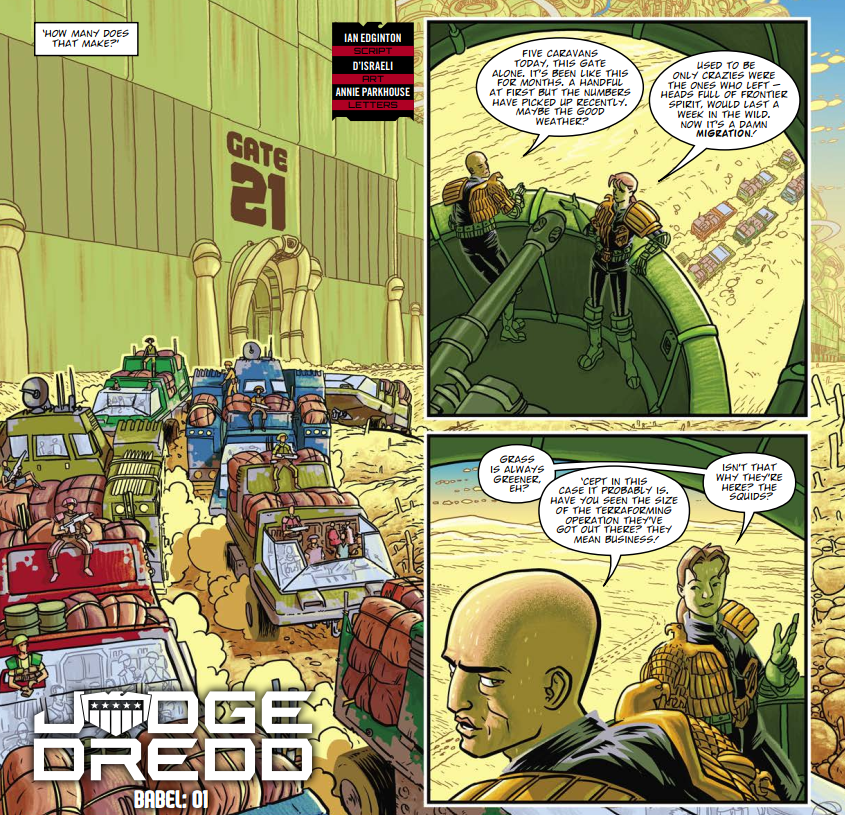
It’s now an incredible 32 years since the Edginton/D’Israeli partnership began with God’s Little Acre in Revolver back in 1990.
Ian, with as long and fruitful a working relationship as you’ve had, how do the pair of you work together now? I’m assuming it’s a process that’s streamlined and synergised as time has gone on.
IE: It’s pretty much the same as it ever was. I’ll run some ideas by Matt and we’ll bounce them around. When there’s one that we’re both keen on I’ll script it up and let Matt do his stuff. I always try to include things that I know he likes to draw and likewise he’ll sometimes ask to swap some scenes around so he can give others more shoulder room. It’s always been a collaborative process.
Similarly Matt, after working with Ian for so long, is it simply a case of he throws a script at you with something along the lines of – ‘huge interior with oodles of alien-y detailing’ and that sort of thing?
MB: Ian’s very good at giving me concise descriptions of things that paint a picture – for characters, it’s often, “think actor X in movie Y.” For big scenes, he’ll give me an overall outline of the scene and then list any key details that have to be included. I joke that at least once a series he’ll give me what I call an “oh shit!” page – something where at first I’m like, how the hell do I draw this? But then I figure it out and the work is always better as a result.
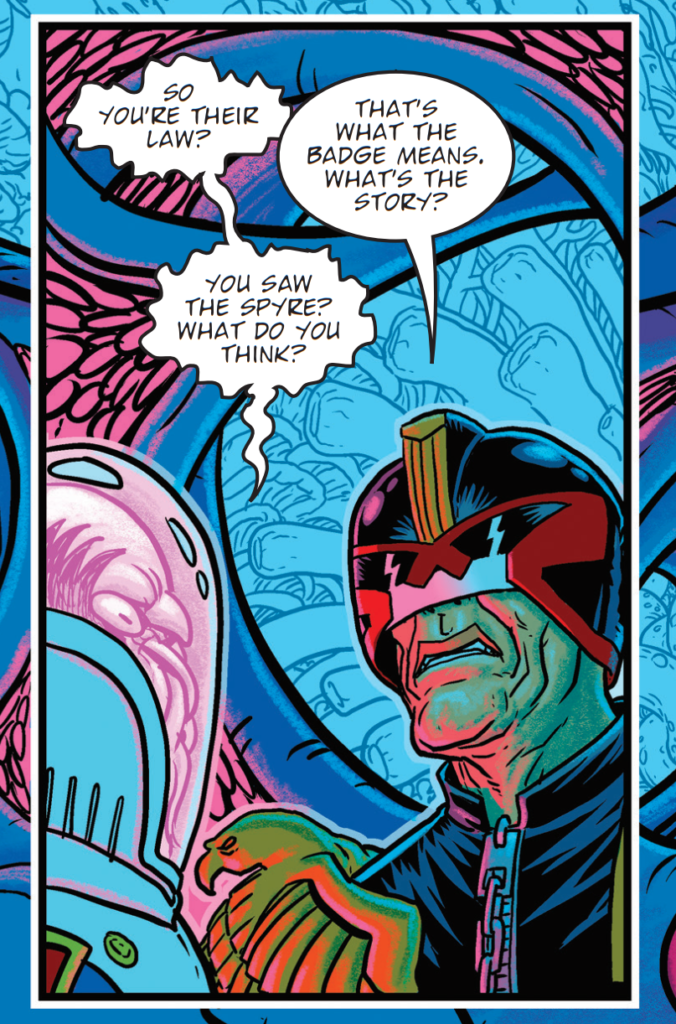
Since then, your collaborations include some Judge Dredd, Leviathan, Stickleback, and of course the saga of Scarlet Traces, something that you began together in 2002. Other works together include Batman, Kingdom of the Wicked, and Nevermore: Murder in the Rue Morgue.
In your long careers, I think I’m probably right in saying that it’s Scarlet Traces that’s become your best-known work together. It’s something that you recently finished, in a way, with the publication of the Storm Front storyline, effectively ending the saga of the Human-Martian conflict.
I understand that this isn’t the end-end for Scarlet Traces though and that you do have plans for more. Can you both give us some idea of what we can expect?
IE: Yes, Scarlet Traces is probably what we’re mostly known for. We’ve tied up the main storyline for now, there are plot threads we can pick up on but we’re going to give them a breather for now.
The next story will most likely be one set back in the early days of Scarlet Traces, just after the demise of the Martian invasion force. It’s a grisly, gothic murder mystery set against the backdrop of a war-torn London.
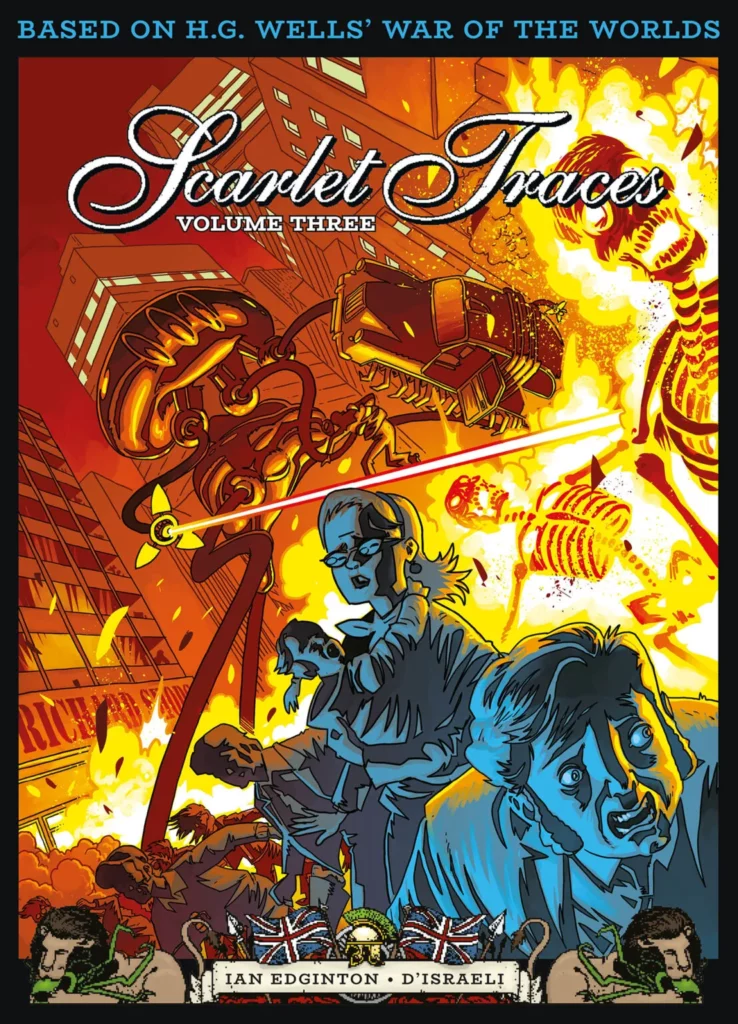
Leviathan is another of your works that’s spoken of with great love by all who read it. It’s celebrating its 20th anniversary in 2023 with not one but two reprints – coming out soon as part of the Best Of 2000 AD graphic novel volumes and well as having just been released in hardback as part of Hachette’s 2000 AD Ultimate Collection.
What does it mean to you that this is FINALLY getting back into print in the Best of 2000 AD?
IE: It’s good to see it back in print, especially as a hardcover!
MB: It is terrific to see Leviathan back in print. One of the few downsides to working for 2000AD is that, as a creator, you don’t control what stays in print, so it’s brilliant when your stuff “comes around” again.
Yes, Leviathan is one of those great 2000 AD tales that you should all be reading – featuring the vast cruise liner Leviathan that set sail in 1928 but, 20 years later, still hasn’t reached its destination, trapped in a nightmarish netherworld where something monstrous is stalking the passengers.
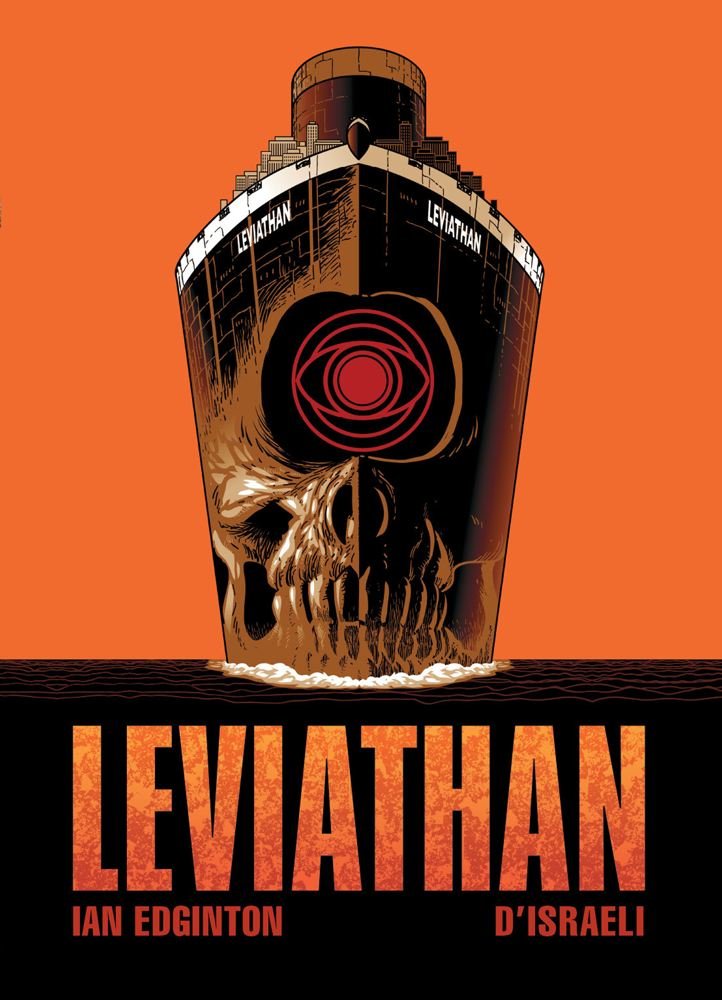
Okay, back to Babel and Matt’s particular vision of Judge Dredd. It follows in a long line of artists who don’t necessarily play along with the established look of Dredd – I’m including you here with the likes of Mick McMahon and Brendan McCarthy.
When it comes to your version of Dredd, what are you going for and how important do you think/feel it is that we should be seeing many different versions of the character?
MB: I’ve always loved the fact that Dredd has had many interpretations – this goes back to reading early 2000 AD as a ten-year-old, where you’d get a gritty early Mick McMahon Dredd one week and a slick Ian Gibson Dredd the next. That tradition of accommodating different art styles has really helped the character to stay fresh over the years.
I really struggled when I first started drawing Dredd – he’s the only character I’ve ever worked on that I read regularly as a kid, so in lots of ways he was too important to me. I’ve only ever done sporadic stories, so it took a long time for my version to settle. You can see in the early stuff – Dredd: Master Moves for the Megazine, The Horror In Emergency Camp 4 for 2000 AD, and the first two time traveller stories with Ian – I’m kind of thrashing around a bit trying to find my feet with the character. It wasn’t till the third time traveller story in 2007 that I really found my feet, but then I didn’t get any more Dredd for years!
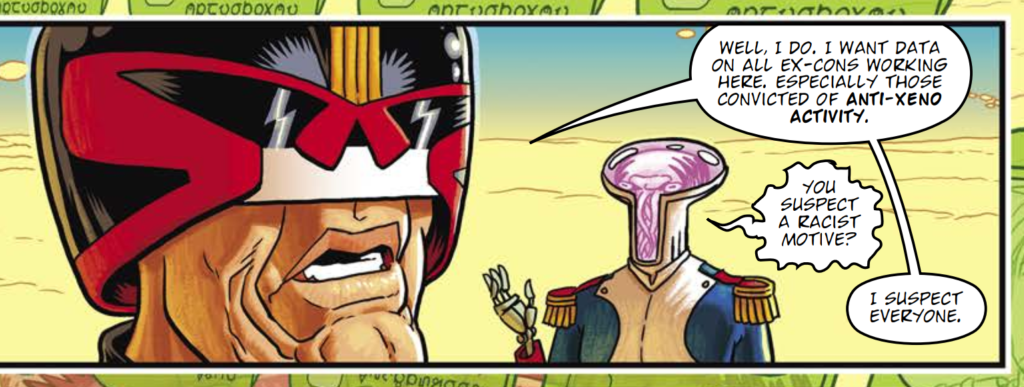
And what’s your approach to putting YOUR Dredd on the page?
MB: There were two things I was trying to go for with my version of Dredd, one of them important, the other just a visual tweak. The main thing was to get across the idea that he’s old – like, Mega-City medicine is amazing, and eighty is the new forty there, fine, but I like the idea of there being a weight of years under the surface. So when I draw Dredd in close up I try to get something of, say Clint Eastwood from Gran Torino – he’s clearly still hard as nails, but he’s also starting to look a bit like he’s been mummified.
The minor thing was the helmet. There’d been a post-Brendan thing of making the helmet very wide and wok-like, and I wanted it to be a more sensible shape – my ideal was something like Steve Dillon’s version. It took me a while to find the shape and work it out from all angles, but it’s settled to being a little wider at the top than the base. I wish I had the nerve to go full-on retro and do the skull-like rounded eyeholes from the original Carlos version though.
At this point, do feel free to go deep into your process now for putting together your art – it’s something that’s always fascinating!
And readers, Matt hasn’t let us down here – a wonderful bit of breaking down the process is coming… from that great page in Babel part 1 featuring those much-loved Adventure 2000 vehicles. But first, a few of Matt’s designs for this storyline…
.
MB: I get the script as a word document; I print that out and mark up the script (not shown), writing the total number of panels for each page at the top of that page, and underlining any important descriptions so I don’t miss them.
Step 1) Thumbnails/Roughs – for most of my career I kept a little sketchbook where I would doodle out little “thumbnail” layouts – tiny little rough sketches that establish the arrangement of panels and broad composition of the panels themselves. The idea is that you can rework your ideas very quickly.
These days, it’s done with drawing software and portable drawing pads – I use a Wacom Cintiq Mobilestudio 13, but most artists use iPads. So I open up a page file in Clip Studio Paint – I use that software because it’s custom designed for comics – I have a bunch of template files set up in the right page sizes for different publications, each with loads of layers set up for pencilling, inking, colouring and so on.
I do the thumbnailing stage straight into a page file. Figures are drawn as extremely basic stick-figure “skeletons,” just to get placement and rough proportions right.
Before I draw anything, though, I set up the panel borders and rough letter the page my copy-pasting text from the script. This rough lettering will never see print, it’s just there so I know how much space to leave for the real lettering.
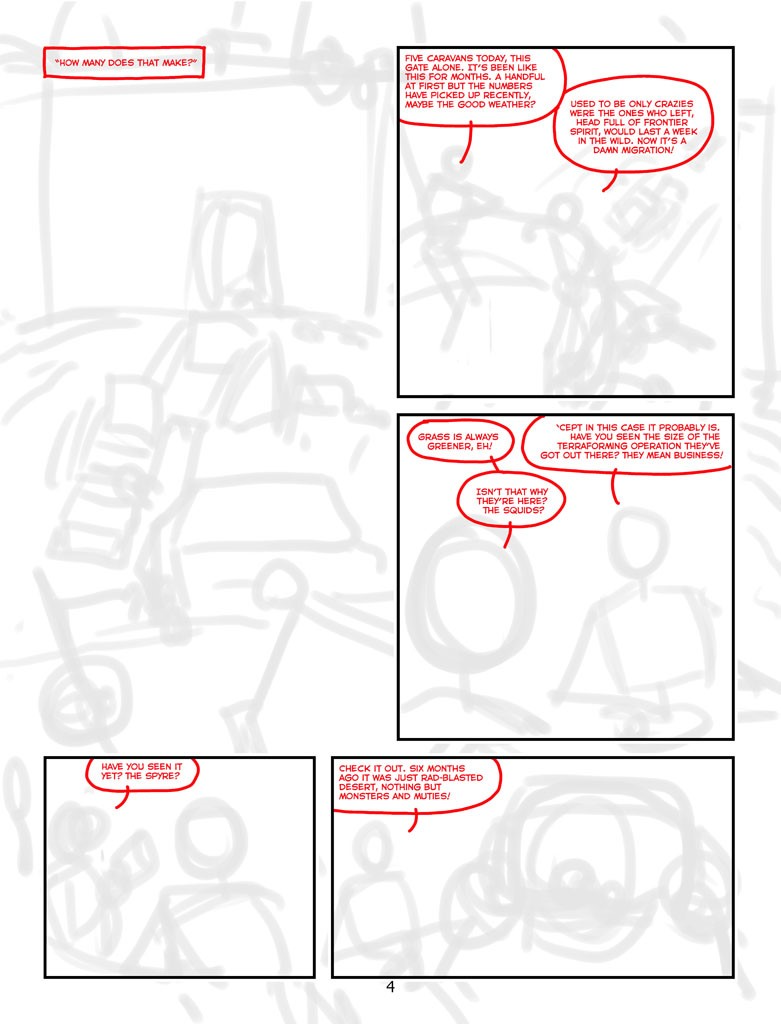
MB: Step 2) Rough pencils – at this point I add perspective (using Clip Studio Paint’s perspective rulers, in the old days it was an actual ruler and a drawing board!) and I start fleshing out the drawing. I’m concentrating on firming up the proportions, getting body language and gestures, and establishing the mass of objects – detail comes in the next stage.
I also add any 3D models I’ll be using at this stage. Clip Studio Paint technically allows you to import and position models on the page but I find the tools clunky and the rendering of imported models to be quirky. Generally, I set up the models in the 3D program (I’m learning Blender because my old software was discontinued), screen grab the result and import a JPEG onto the page. In this case, I used models created by Mark Walton to render the Land Raider vehicles.
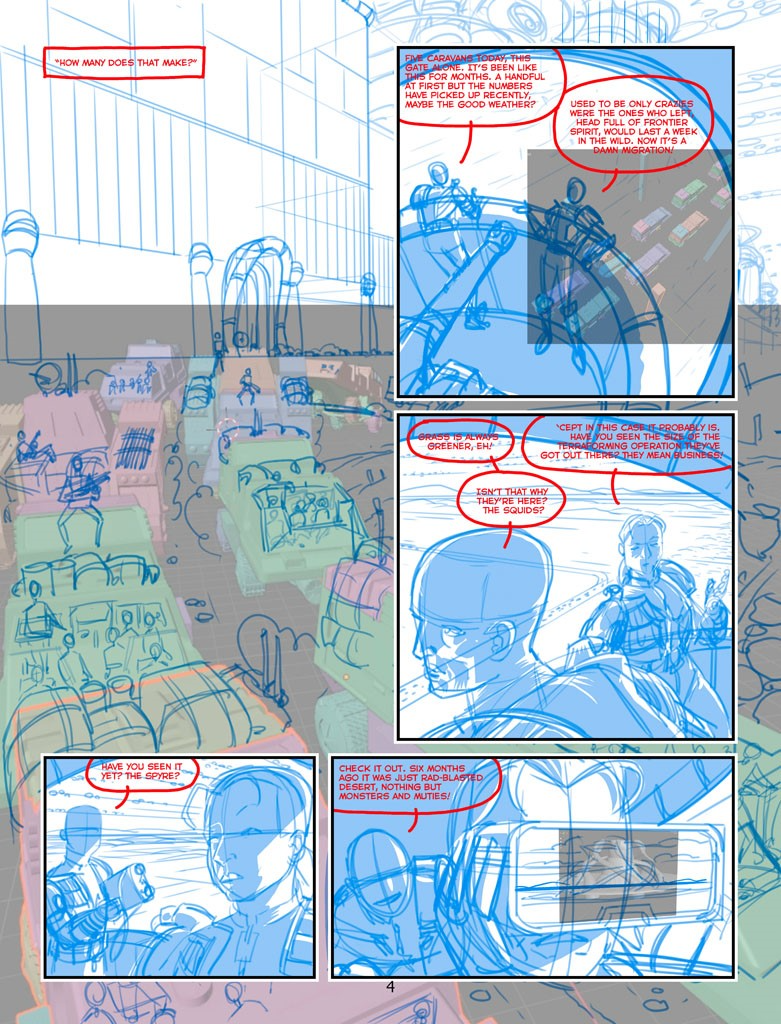
MB: Step 3) Pencils – at this point I’m refining the drawing and adding missing detail. Note that I only pencil the figures – I limit this labour-intensive step to the areas of the page that readers pay most attention to.
No one’s going to know if a Mega-City Cityblock has a few extra storeys, but everyone will notice if a human face is askew by a tiny bit.
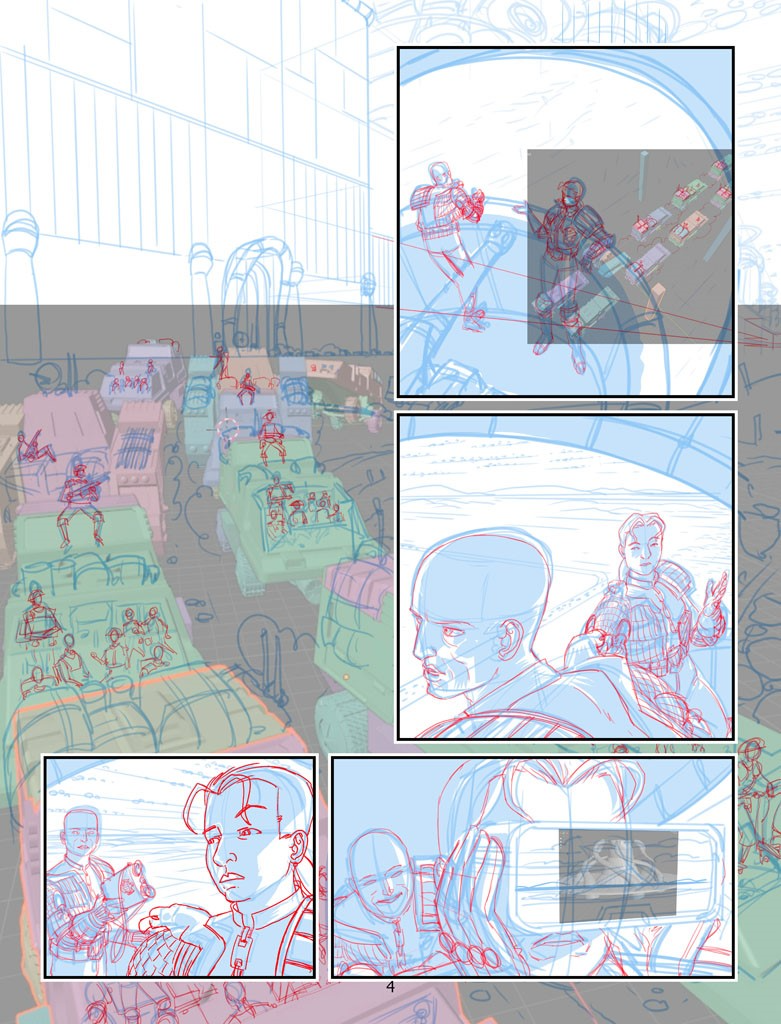
MB: Step 4) Inks – I “ink” the page with pressure-sensitive brushes that mimic the old brushes and dip-pens I used to use in the pre-digital days. Getting the digital tools to behave like my old analogue ones is an ongoing process – in fact if you look carefully at parts one and two of Dredd: Babel you’ll see a slight change to the line quality.
I like my work to look hand-drawn so I don’t use rulers to help draw straight lines – if you look at the panels in the Mega City Wall, they’re all just a tiny bit wibbly. Working digitally means I can easily do coloured outlines (“colour holds”) for things like the interiors of the Land Raiders (seen through windscreens) and distance haze on the city.
Adding black can be a big part of the process, especially on pages with a lot of shadows, but for this bright-lit daylight desert scene I’m using as little black as possible, restricting it to actual black objects like the Judges’ uniforms and car tyres.
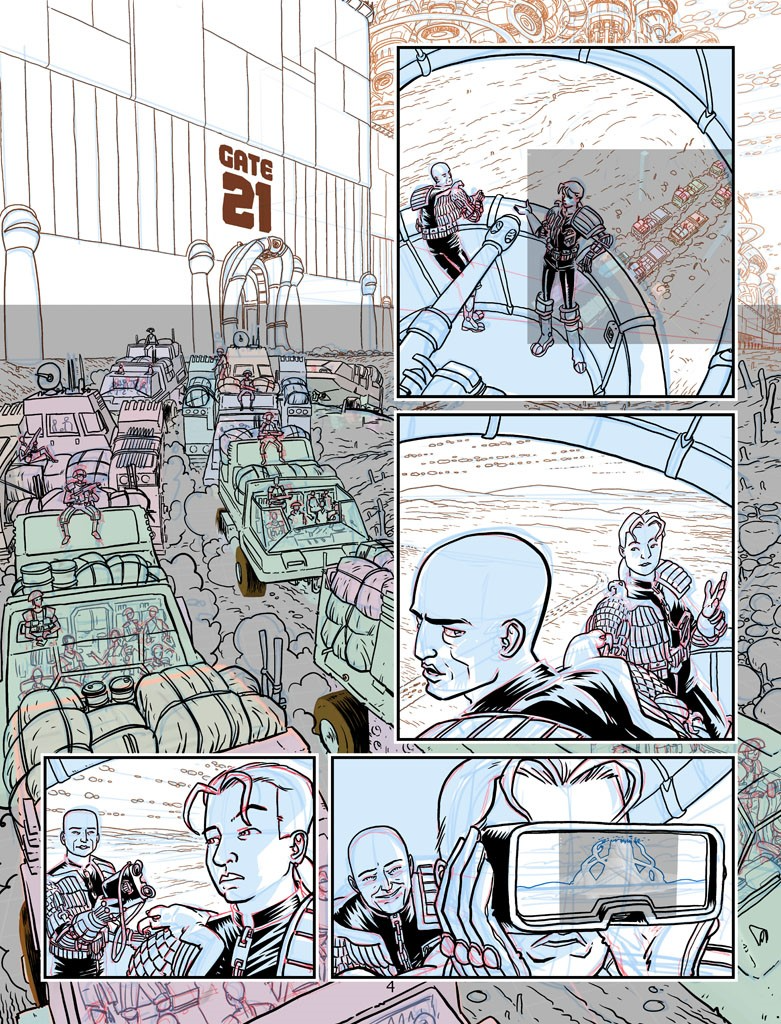
MB: Step 5) Flat Colour – I like to colour by adding shading and highlights to a mid-tone, acrylic-painting style. So I add flat colour to everything on the page as a ground to work out from.

MB: Step 6) Modelling (the final step) – I add highlights and shading over the flat colour. My actual process would take a whole tutorial to explain, but the TL:DR is – I add shading using transparent colour which darkens the underlying colours (like adding ink or watercolour washes) and highlights using translucent colour which lightens the underlying colour (like oil paint or acrylic). The advantage of this system is that I don’t have to pick a separate highlight and shadow colour for every colour on the page – instead I can concentrate on where the modelling should go and all the colours blend automatically. I start adding shadows with Clip Studio Paint’s Lasso Fill Tool – I just draw round an area and it automatically fills with colour. That gives me a hard edge which I soften as necessary with things like brush or pencil tools.
I do two layers of shading to give extra depth to the colours. I’ll also add opaque rimlights to the edge of objects to help them “pop.”
I wanted a real sense of desert heat, so for the first panel, out in the desert, the shadows are a warm brown. For the Interior scenes with the two wall guards, I used green shading to simulate light bouncing off the green Plasteen walls around them.
Once the pages are finished, I export them in the correct file format (CMYK TIFF) and upload them to the Rebellion server. Working files can have 30-40 layers, but the print files are usually flattened down to a single layer.

Finally, what’s coming up from the pair of you in the future, both for Tharg and elsewhere?
MB: Ian and I are (finally!) working on a second series of Helium, and we have other ideas beyond that (I’ll leave it to Ian to flesh those out, not sure what I’m supposed to discuss).
Yep, reckon those are the Scarlet Traces plans Ian’s told us about already!
MB: Rob Williams and I would love to do more Lowlife, but (largely due to me) we haven’t got the scheduling sorted out yet. I’m also, for the first time in decades, working on a little side project of my own. No idea what I’m going to do with that, I might just put it out as a web comic when it’s done (probably a couple of years from now).
IE: There’s another series of Helium and then the Scarlet Traces story. After that, we have an idea for a brand new series, something completely different that we can’t wait to start on! In other news, I’m working with Leigh Gallagher on more Kingmaker and there are a couple of secret things in the works that I don’t want to jinx!
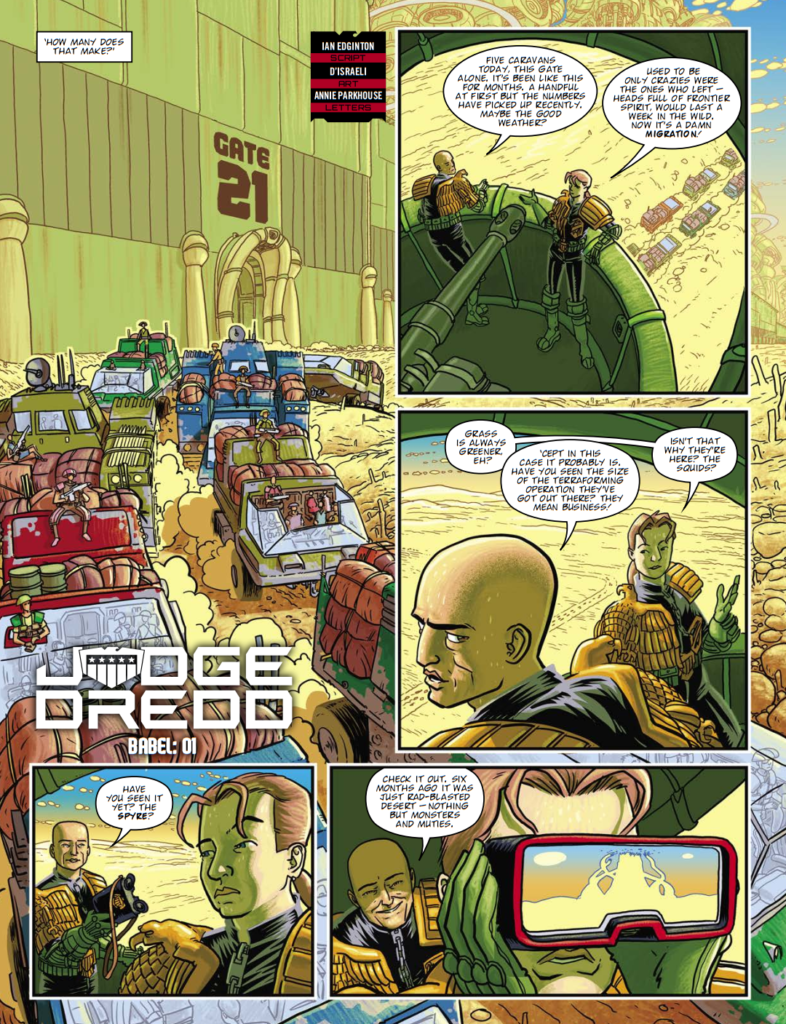
Thank you so much to both Ian and Matt/D’Israeli for chatting to us. You can find Judge Dredd: Babel in the Megazine issue 449 and issue 450 – issue 449 is out on the stands and available from the 2000 AD web shop right now.
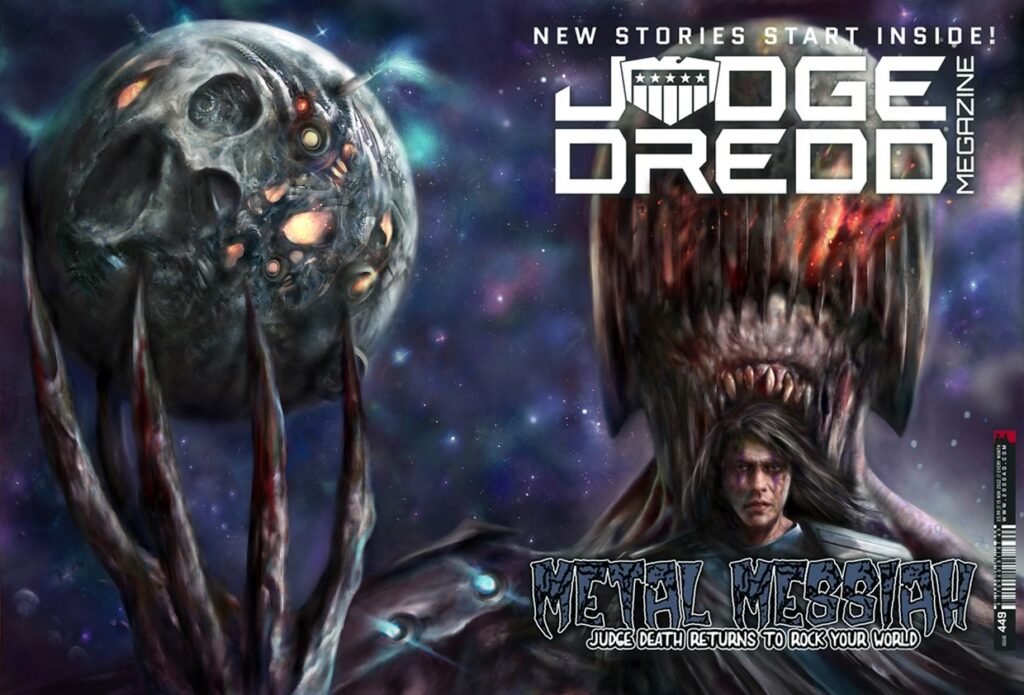
For more chat with Ian and Matt, there’s this great interview about the final (for now) Scarlet Traces storyline, Storm Front, right here. And for more of D’Israeli’s wonderful talk about process, can we point you to a series of Covers Uncovered features – Prog 1988, Prog 2028, Prog 2032, Prog 2204, and Prog 2208.
Finally, because we only showed you them small earlier, those great D’Israeli designs for the Cephaloids from Babel…
